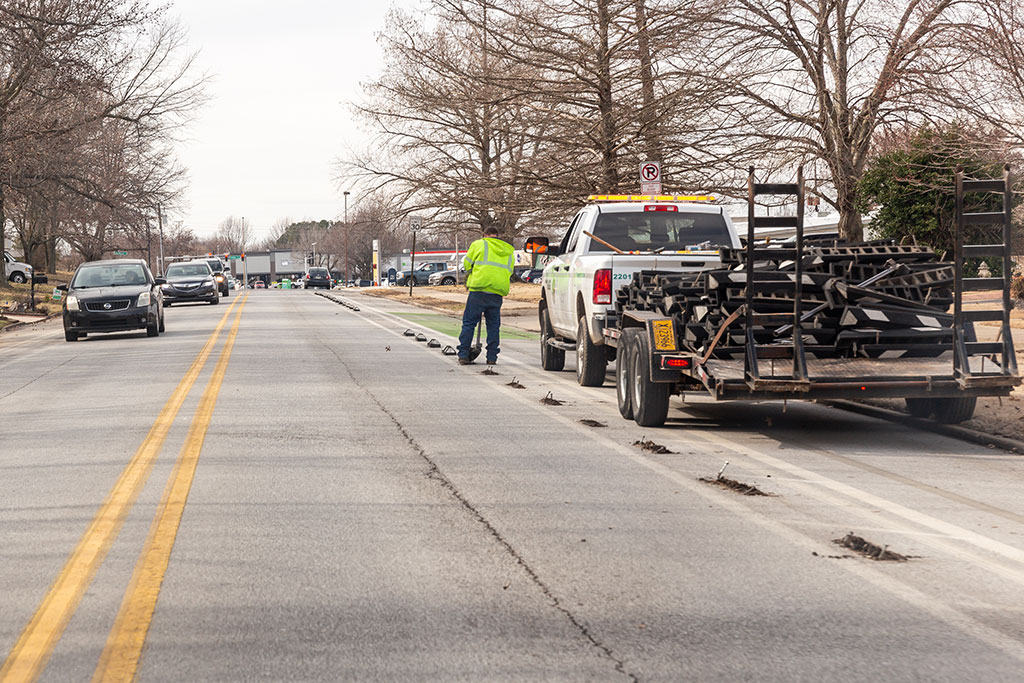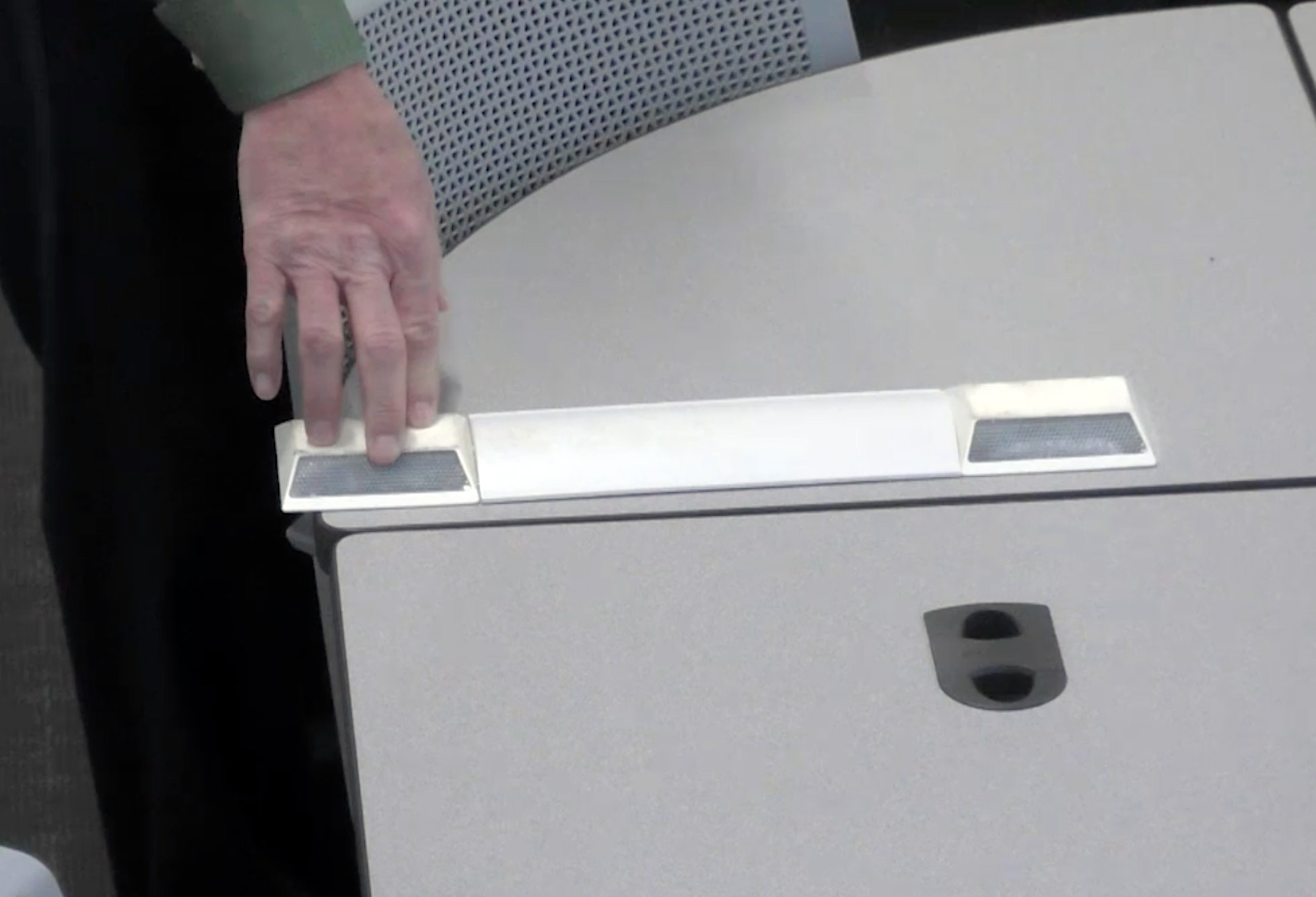
Crews work Thursday to remove the bumper blocks that have lined the bike lanes along Rolling Hills since late 2018.
Photo: Todd Gill, Fayetteville Flyer
Changes to the Rolling Hills Drive bike lanes began this week.
Crews on Thursday (Feb. 27) began removing the rubber bumpers that line the bike lanes, and replacing them with smaller, raised rumble strips. The plan is to spend Thursday, Friday and Saturday working on the project.
The work will require temporary lane closures from 7 a.m. to 4 p.m. each day, according to a news release.
A series of large bumper blocks and flexible bollards were installed in November 2018 as part of a pilot project organized by BikeNWA and funded by a grant from the Walton Family Foundation.
The additions were designed to improve the safety for people who ride bikes along the stretch of road which helps connect Butterfield Trail Elementary to the Razorback Greenway. The idea was to evaluate usage and public opinion to decide whether permanent bike safety infrastructure should be included in an upcoming project that will completely overhaul Rolling Hills Drive.
City staff said it will be at least two or three more years before any permanent changes are made, but after studying the area and surveying residents, two things became clear: people want added safety features on Rolling Hills, but nothing as obtrusive as what was installed with the pilot project.

Rumble strips with reflectors / Courtesy Fayetteville Government Channel
While the bumper blocks were made of rubber, they were large enough that some drivers felt uncomfortable navigating the roadway and moving over for emergency vehicles. And even though the driving lanes are still 10 feet wide, the city received a barrage of complaints from motorists who felt like the road was too narrow. Many others said the bumpers were just ugly.
Dane Eifling, bicycle programs coordinator for the city and the University of Arkansas, said meetings with stakeholders throughout the year revealed a genuine interest in improving the sense of safety through the corridor, but an overall distaste for the bumper blocks.
Eifling said that’s understandable.
“While the cycling community enjoyed the pilot program, we have to be realistic,” Eifling said. “The cyclists enjoyed the added sense of safety the bumpers provided, but even they admitted it was unsightly.”
Terry Gulley, the city’s transportation services director, said the rumble strips can be driven over, but they create a vibration that can’t be missed.
“If you drive over these you’ll know it,” Gulley said, comparing the sensation to driving along the edge of an interstate. “It catches your attention pretty quick.”
He said the width of the driving lanes won’t change, but the strips will be set back 12 inches from where the bumpers are currently installed in an effort to improve the perception some motorists have of being squeezed in.

